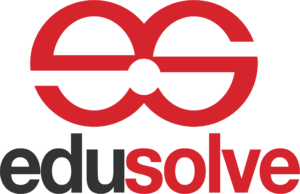One issue reverberates throughout districts, charter networks, and school communities in the ever-changing and frequently difficult field of education: Why is principal oversight crucial to school success? This question is grounded in the real-world experiences of schools working to enhance learning environments and raise student achievement, therefore it is not merely theoretical. A key tactic for long-term progress is efficient principal supervision, which is becoming more and more important as schools are under pressure to produce high academic performance.
The issue, “Why is principal supervision important for school success?” is examined in this blog. by dissecting its impact on student results, school atmosphere, teacher effectiveness, and leadership development. We’ll explore how careful supervision changes school leadership from a solo job to a supportive, introspective, and growth-focused role—ultimately benefiting students, teachers, and communities—by drawing on research, case studies, and best practices.
The evolving role of the principal
We must first acknowledge the evolution of the principal’s position in order to comprehend the significance of principle supervision for school performance. Principals were frequently thought of as building managers decades ago, in charge of practical matters including facilities, budgeting, and scheduling. However, they are now more widely acknowledged as instructional leaders entrusted with establishing a culture of continuous improvement, advancing teacher development, and shaping the school’s vision.
Principals cannot be successful in isolation due of these increased responsibilities. They may overcome difficult obstacles, coordinate their efforts with district objectives, and develop into flexible leaders with the support of effective supervision. Without it, principals run the risk of stagnation, inconsistent practices, and exhaustion, all of which can seriously harm students’ academic performance.
What is principal supervision?
Let’s first define principle supervision before discussing why it is crucial for school performance. Annual evaluations and compliance checks are only one aspect of principal supervision. It entails continuous, encouraging interaction between school administrators and district or charter network officials (such as superintendents, area directors, or principle supervisors). Instead of focusing on punishment, the goal is to strengthen principals’ ability to manage change, lead instruction, and promote teamwork.
Among the components of effective supervision are:
- Frequent feedback and coaching sessions
- Setting goals in line with objectives for school improvement
- Data-driven analysis of student performance
- Leadership challenges-specific professional development
- Observing classroom instruction and leadership practices
Principal supervision is crucial for school performance because it goes beyond accountability and gives principals the tools they need to lead successfully. This change from standard evaluation to developmental assistance shows why.
Building instructional leadership capacity
Principals have a direct impact on teaching and learning through establishing standards, giving constructive criticism, and fostering an environment conducive to excellent instruction.
When managers involve principals as collaborators in enhancement, they:
- Demonstrate data analysis and reflective practice.
- Assist principals in determining areas for improvement and teaching strengths.
- Assist principals in running productive PLCs (professional learning communities).
- Promote teaching methods that are grounded in evidence.
According to research, student achievement is typically higher in schools with principals who are effective instructional leaders. Instructional leadership-focused supervision ensures that administrators lead schools academically rather than just managing them by bridging the gap between vision and day-to-day operations.
Supporting continuous professional growth
The development of principals as professionals is another factor supporting the need of principal supervision for school performance. Context, difficulties, and community demands all have an impact on the developing talent of leadership. Principals that are under supervision have the chance to:
- Consider your accomplishments and shortcomings.
- Get helpful criticism from seasoned mentors.
- Get access to focused professional development
- Discuss difficulties in a secure environment.
Principal supervision thus turns into a pillar of lifelong learning. Professionally developing principals are better able to run innovative, resilient, and adaptive schools.
Improving school climate and teacher retention
The indirect effect that principal supervision has on teacher retention and morale is a commonly disregarded explanation for why it is crucial for school performance. The tone for trust, communication, and school climate is set by the principal. Supervision teaches principals how to:
- Develop a good rapport with the faculty and students.
- Effectively resolve disputes
- Encourage teacher voice and shared leadership.
- Acknowledge and honor employees’ contributions
Healthy school climates are frequently associated with lower teacher turnover and higher levels of engagement, two characteristics that are directly related to student learning. As a result, monitoring assists principals in establishing work environments that encourage teachers to stay and flourish.
Data-driven improvement and accountability
Additionally, supervision improves principals’ capacity to make informed decisions using data. Supervisors can assist principals in examining several data sources rather than just test results:
- Trends in discipline and attendance
- Measures of student growth
- Data from teacher evaluations
- Surveys of engagement and climate
Principals may spearhead more focused and successful improvement initiatives when they learn to use data as a tool for introspection. This data-driven method enables principals take deliberate rather than reactive action, which explains why principle oversight is crucial for school success.
Bridging district and school-level goals
Principals work at the nexus of local school needs and district priorities. By outlining expectations, converting district policies into workable plans, and guaranteeing uniformity among schools without compromising context, supervision aids in their alignment of these layers.
For instance, principal supervisors can assist principals in implementing evidence-based literacy strategies that are customized for their student demographics if the district places a strong emphasis on literacy improvement. This alignment fosters coherence and lessens fragmentation, both of which are essential for long-term academic performance.
Supporting principals in challenging contexts
Particular difficulties are faced by schools in high-poverty areas or those undergoing rehabilitation initiatives. In these situations, supervision is even more crucial, providing principals with:
- Support on an emotional level during times of intense stress
- Having access to specialized resources
- Assisting in the management of community dynamics
- Advice on how to increase urgency without exhausting employees
Supervisors reaffirm the idea that principals don’t have to lead alone by supporting them through the most trying times. By helping schools where leadership issues are highest, this collaborative approach maintains equity, which is another reason why principal supervision is crucial for school success.
From compliance to collaboration
Conventional principle monitoring frequently concentrated on compliance, examining whether principals fulfilled deadlines, followed procedures, and finished reports. While accountability is important, a move toward cooperative, growth-oriented supervision is becoming more and more supported by research and practice.
This change is essential to understanding why principle supervision is crucial for today’s school success. Districts and networks can develop principals who view themselves as learners, problem solvers, and instructional leaders rather than merely managers by approaching supervision as a collaboration rather than an oversight function.
Case example: Transformative supervision in action
The tale of a sizable metropolitan district that revamped its supervision strategy serves as an example of why principle monitoring is critical to school performance. Deeper participation was possible since each supervisor worked with fewer schools rather than dozens of principals.
Supervisors:
- Accompanied principals on regular learning walks
- Facilitated sessions for leadership reflection
- Professional development programs were jointly developed using school data.
- Principals could have similar coaching talks with instructors.
The district experienced gains in principal retention, student results, and teacher practice in just two years. Principals said they felt less alone, more supported, and more prepared to spearhead changes in instruction. This practical achievement demonstrates the transformational potential of good supervision.
Challenges and considerations
Despite the obvious advantages, there are drawbacks to putting in place excellent primary supervision:
- Supervisors themselves require continual improvement and training.
- The extent of supervision may be limited by time restrictions.
- Careful calibration is needed to strike a balance between assistance and accountability.
- In order to decrease supervisor caseloads, systems must allocate resources.
By tackling these issues, districts and networks can maximize the benefits of supervision in promoting academic achievement.
The future of principal supervision
Principal supervision will change along with schooling. Among the new trends are:
- Models of coaching based on the principle of adult learning
- Using digital resources for group reflection
- Principals’ peer-to-peer networks, which are supported by supervisors
- Data dashboards to monitor the long-term effects of leadership
Principal supervision is crucial for school performance in the years to come, and these advances promise to make it even more impactful, responsive, and individualized.
Conclusion
Going back to the main query, “Why is principal supervision important for school success?” We can see that supervision is neither about compliance or micromanagement. Rather, it’s about alignment, growth, and partnership. Good supervision:
- Enhances the instructional leadership of principals
- Encourages professional growth and reflective practice.
- Enhances teacher retention and school atmosphere
- Adapts district plans to local requirements
- Encourages development based on data
In the end, principle supervision supports principals in their most important role: establishing learning, development, and success environments for all children.











